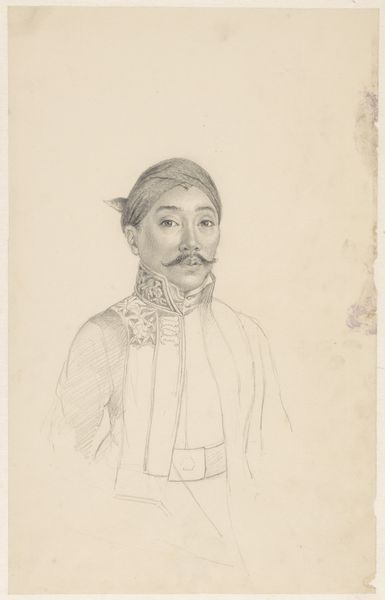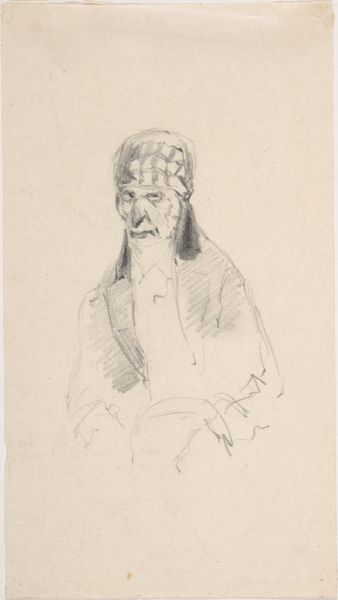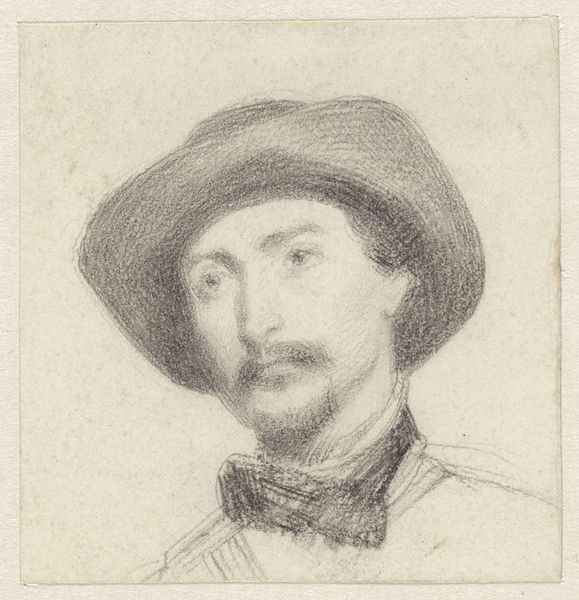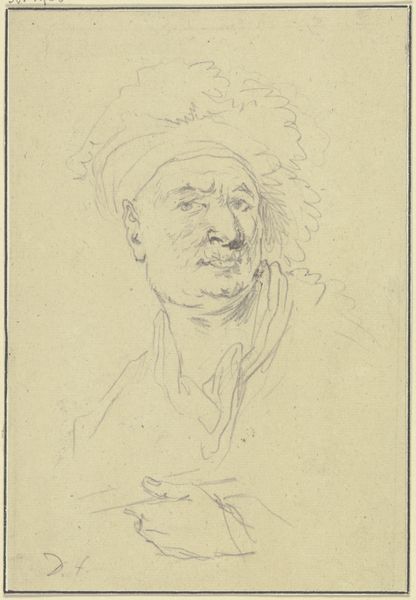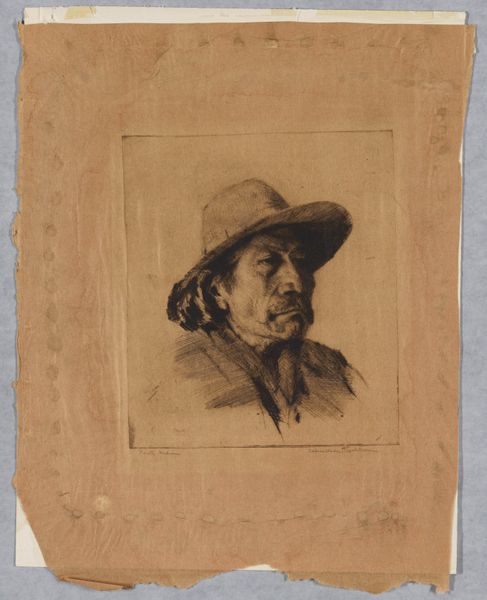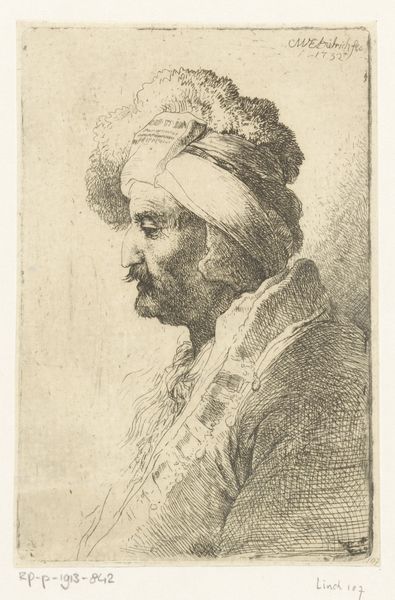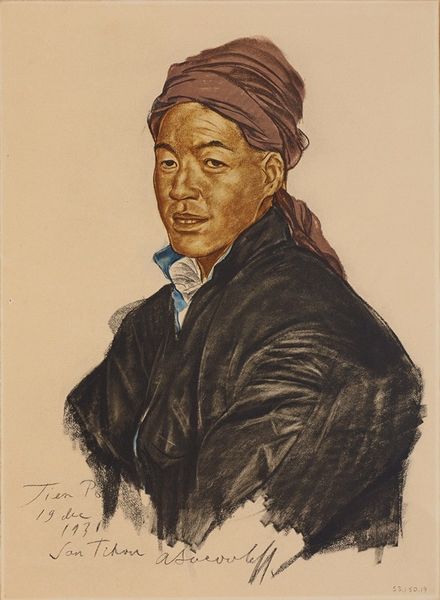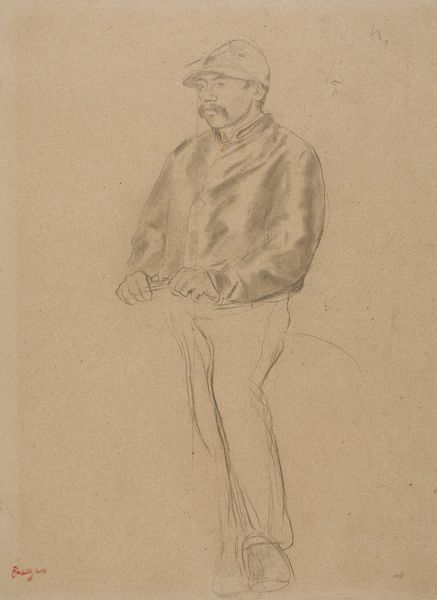
drawing, pencil
#
portrait
#
drawing
#
asian-art
#
pencil drawing
#
pencil
#
portrait drawing
#
realism
Dimensions: height 316 mm, width 233 mm
Copyright: Rijks Museum: Open Domain
Editor: Here we have Ferdinand Oldewelt’s “Studie van een Javaan,” likely created sometime between 1867 and 1935. It’s a striking pencil drawing. What grabs me is the visible texture created by the pencil strokes; it feels very raw and immediate. What can you tell me about this portrait? Curator: Well, focusing on materiality, we have to consider the colonial context. What kind of pencil and paper were used? Where were they sourced? The very act of sketching someone from Java using European materials speaks to the power dynamics at play during that period. The artist's labor, mediated through these materials, perpetuates a certain gaze. Editor: So, you’re suggesting that even something as simple as a pencil carries cultural baggage? Curator: Precisely. This isn’t just a neutral rendering. The artist, the sitter, and the materials all existed within a complex web of colonial economics and social hierarchies. Think about the graphite itself – likely mined and processed with exploitative labor practices. The paper too, and how its production affected the distribution of knowledge. Editor: I never considered that a portrait could speak so directly to the means of its own production! So how does looking at it this way change our interpretation? Curator: It forces us to ask: Whose story is being told, and who is doing the telling? The artist’s hand mediates our access to this Javanese individual. And we must consider that hand’s relationship to the global market of goods and cultural exchange. Editor: That gives me a completely different perspective on what I initially saw as just a simple drawing. It really emphasizes the human cost embedded in the materials themselves. Curator: Indeed. Recognizing that embedded labor shifts the focus away from simply aesthetic appreciation and toward a more critical understanding of its origins.
Comments
No comments
Be the first to comment and join the conversation on the ultimate creative platform.


